#muharram history
Explore tagged Tumblr posts
Text
Happy Islamic New Year! Also known as the Hijri New Year, it is the first day of Muharram, which is the first month in the Islamic calendar. The starting point of Islamic calendar is migration of the Muslim Prophet Muhammad from Mecca to Medina in 622 CE. This day, observed at sunset of July 6th this year, signifies a time of renewal and spiritual contemplation.
Did you know Sacramento is home to the second oldest Muslim Mosque in the United States west of the Mississippi River? The Muslim community has grown in the Sacramento area ever since the early 1900s. A large majority of those who came to California in the early 1900s were South Asian immigrants seeking education in the United States or were refugees fleeing colonial oppression.
Construction of the Mosque began in 1941 at 411 V Street and was finished in 1947. This Mosque continues to serve the Islamic community today as part of the Muslim Mosque Association.
For today, Jared letterpress printed a Hijri New Year greeting with black rubber base ink using a 4x6 Golding Official #2 tabletop printing press. The text reads, “Hijri New Year 1st day of Muharram,” and was typeset with 30 point Caslon type font.
#Islamic new year#islam#muharram#museum#sacramento#history#letterpress#printing#art#printmaking#asmr#old sacramento
543 notes
·
View notes
Text
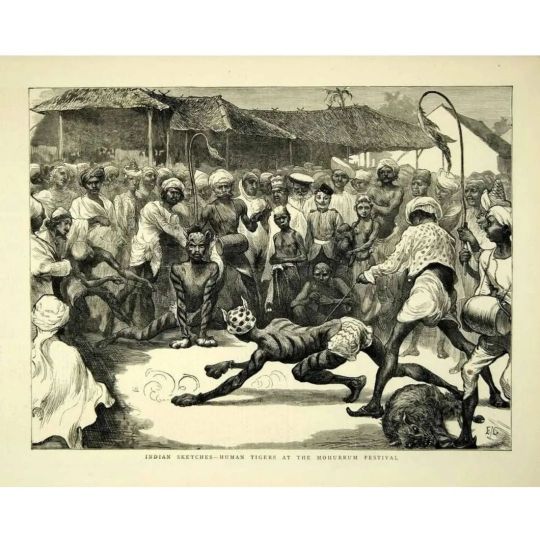

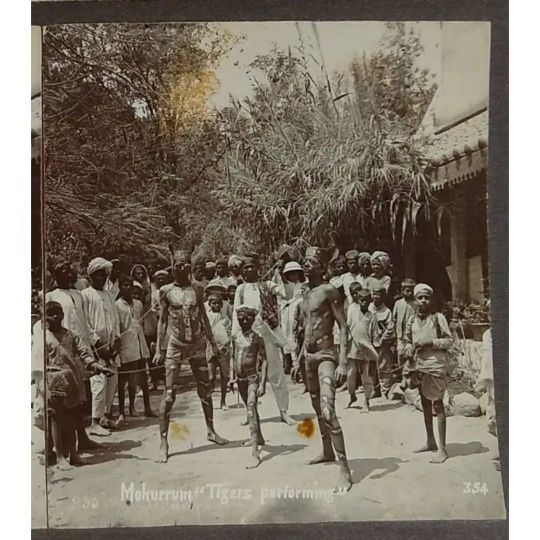
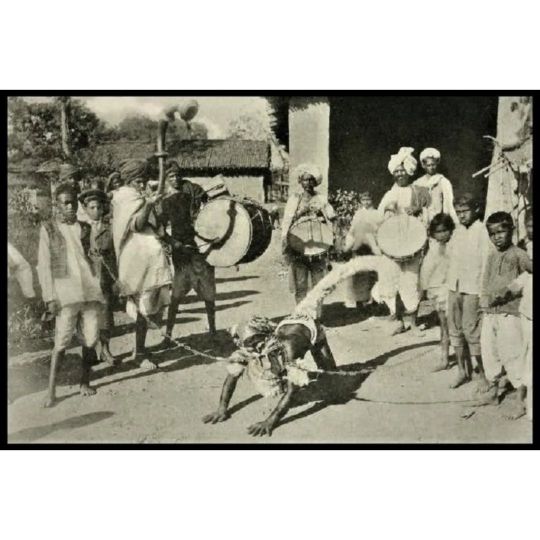
"During the month of Muharram - the first month of the Islamic calendar - in regions of Central and South India, people dress up as tigers as part of a cultural practice that goes back centuries. They wear masks, paint tiger stripes on their bodies, and move and act like a tiger. There is even a "tiger dance." Some sources say that, within the context of Muharram, the purpose of imitating a tiger is to show that Imam Hussein’s bravery and strength can be comparable to that of a tiger. (During Muharram, Shia Muslims mourn the death and sacrifice of the grandson of Prophet Muhammad, Imam Hussein ibn Ali, in the battle of Kerbala).
This practice of imitating tigers is also seen in other rituals in different regions of India, such as in Kerala, where people are dressed as tigers to celebrate the harvest each year. It's known as Puli kali (tiger dance). In Tamil Nadu, it's known as Puliyattam. In Andhra Pradesh, it's called Pulivesham.
It is unclear where the cultural practice of imitating tigers began from and how it spread and blended into different communities around India."
#muharram#islam#religion#history#india#puli kali#Puliyattam#Pulivesham#dance#tigers#syncretism#harvest#hinduism#culture
24 notes
·
View notes
Text
Karbala, a revered city in Iraq, holds a significant place in Islamic history, especially among Shia Muslims. The tragic Battle of Karbala, where Imam Hussain (AS) and his companions were martyred, serves as a timeless symbol of resistance, sacrifice, and justice.
#umrah guide#hajj and umrah#umrah service#exclusive umrah#umrah package 2024#umrah 2024#umrah experience#spiritual journey#faith in islam#umrah tour#Karbala#Islamic History#Imam Hussain#Battle Of Karbala#Muharram#Ashura#Shia Islam#Resistance And Sacrifice#Umrah Pilgrimage#Spiritual Journey#Islamic Pilgrimage
0 notes
Text
Amazing to see that ISIS is busy killing Shi'as in Oman -- a country that never experiences sectarianism -- during Muharram. Absolute cowards, who shoot innocent people during the most tragic occasion in the history of Islam, but you'll go kill fellow Muslims instead of fighting against the oppressors.
Death to Salafism and Wahhabism.
456 notes
·
View notes
Text
instagram
From Brown History on Instagram:
“Did you know that in 1884, the British colonial government in Trinidad & Tobago banned "the beating of any drum, the blowing of any horn, or the use of any other noisy instrument"?
Drumming is an integral part of celebrations for many communities on the island. However, this did not deter the people; instead, it strengthened their resolve to preserve their traditions and religious customs.
Afro-Trinidadians discovered bamboo drums, known as "tamboo bamboo," as a popular new way to sustain the rhythms essential to their culture (see video). By the late 1930s, tamboo bamboo players began turning to metal objects like kitchen utensils, pots, pans, and buckets to create music.
The discovery of oil near the island's shores, coupled with WW II, brought hundreds of thousands of American 55-gallon oil drums to Trinidad. These discarded drums eventually paved the way for steelpans, now recognized as the national instrument of Trinidad & Tobago.
The drumming ban also affected East Indians. The "tassa" drum was central to their religious practices, particularly in Muslim observances. In 1884, more regulations banned the Hosay processions, which honors the martyrdom of Hussain, the grandson of the Prophet.
In an act of civil disobedience, a group of Indian laborers defied the suppression by continuing the Muharram procession as usual, beating tassa drums and carrying tajahs. They believed the law was unjust. However, as the procession passed, police opened fire on the crowd of men, women, and children. Between 18 and 20 people were killed, and hundreds were injured. This tragedy came to be known as "The Hosay Massacre of 1884." The British, however, referred to it as "The Hosay Riots."
Despite historical tensions, the drumming traditions of East Indians and Africans became a shared cultural bond. Over time, these traditions influenced each other, with Afro-Trinidadians playing tassa drums and Indo-Trinidadians performing in steelbands. Hosay has since evolved to include the wider community, becoming a shared event.
Source: Steel Drums and Steelbands by Angela Smith”
#trinidad and tobago#trinidadian culture#trinidadian#trinidad#caribbean#caribbean history#caribbean culture#west indian history#west indies#colonialism#afro caribbean#indo caribbean#afro trinidadian#indo trinidadian#hosay#steelpan#tamboo bamboo#Trinidadian history
29 notes
·
View notes
Text

Today in Islamic history the 2nd of Muharram Imam Hussain's (AS) caravan reached Karbala. From the enemies camp Thousands of Yazid's soldiers were already there, having arrived long before the Imam.
The small tribe living in Karbala gathered around Imam Hussain's (AS) caravan.
Imam Hussain (AS) enquired about the price of the land in Karbala. He then bought the entire land as he knew this would be their burial place.
Then, he first spoke to the menfolk of the tribe.
"O, menfolk of Karbala! We have not come here to fight. Yazid's soldiers will fight with us and we will be killed. They will not bury our bodies and our bodies will be left to the wild animals of the desert. I request a favour from you. Please, bury our bodies. Imam Hussain (AS) then turned to the womenfolk of the tribe.
"Ladies of Karbala! Your menfolk, out of fear of Yazid's soldiers might not bury our bodies. Ladies! When your men are working in the fields, please come out of your houses and bury our bodies.
Somehow Imam Hussain (AS) did not feel the men nor the women would carry out his request. Sadly, he turned to the children who had gathered and spoke gently to them.
Children! If your father or your mother are unable to bury us, I beg you to throw a fistful of sand over our bodies while you are playing in the fields. That way, children, our bodies will slowly get buried."
Then, he turned to everyone who had gathered around and spoke again.
"My second request to you all is to look after the people who will come to visit our graves after our death. They will be my guests so please look after them and feed them for three days."
This pictures show the emotion in the camp of Imam Hussain (AS) as he hugs his 4 year old Daughter Sayeda Ruqayya (SA) also known as Bibi Sakina (SA) surrounded by the women of Imam Hussain's (AS) family.
29 notes
·
View notes
Text
🍃🌸🍃 Sayyida Zainab (sa): A Timeless Role Model for Humanity
Throughout the months of Muharram and Safar we hear of the trials and tribulations that Sayyida Zainab bint Ali (sa) had to endure after the martyrdoms of her brother, Imam Hussain ibn Ali (sa), her children, family members, and companions. But what practical lessons do we as a community take from her immense contribution to humanity?
How well do we appreciate the monumental impact she made on the establishment of our faith and the implications that may have on our lives today?
After the tragic, barbaric martyrdom of Imam Hussain (as), the survival of the fourth Imam, Imam Zayn al-Abidin (as), was paramount for the continuation of Imamate. It was Sayyida Zainab (sa) who helped protect him while he was ill, and prevented his captors from killing him through her strength, leadership, and support. It was also Sayyida Zainab (sa) who ensured that the message of Imam Hussain (as) did not vanish from the pages of history. It was with the constant remembrance of the tragic events of Karbala, in the forum of majalis (gatherings of sorrow), that the message of Imam Hussain (as) has remained pulsing with life until today.
As a community, we should continue to recognize the immense contributions that women have made throughout Islamic history. By acknowledging this crucial role, more opportunities may arise for women to be active participants, leaders, and contributors within our centers, mosques, workplaces, households, communities, and schools.
🌸 The Strength of Sayyida Zainab (sa)
With the survival of the Imamate at stake, it was crucial to protect Imam Zayn al-Abidin (as). Sayyida Zainab (sa) knew that the responsibility of the care of the orphaned children and widows would fall on her shoulders. The fourth Imam (as) was in no condition, due to his illness, to offer her any physical assistance in standing up against the oppressors. We cannot begin to imagine the strength required of an individual enduring the kind of trauma that the survivors of Ashura witnessed and suffered. There was also the emotional toll of the immense loss of loved ones and the sad reality of the brutality and inhumanity inflicted upon the family of the Prophet of Islam (S).
Women must not underestimate their strength, even during the most difficult times. These are situations when being proactive may be of the utmost importance. Imam Zayn al-Abidin (as) did not request Sayyida Zainab (sa) to step back and do nothing. In fact, he relied on her strength a great deal.
🌸 The Leadership of Sayyida Zainab (sa)
One of the most important qualities of a leader is confidence. Sayyida Zainab (sa), without question, was not lacking in this area. Islam’s foundation is deep-rooted in the contributions and sacrifices of exemplary women. As mentioned in our previous blog, ‘Raising Confident Young Muslim Women’, one can reference Sayyida Fatima (sa), Lady Khadijah (sa), and undoubtedly, Sayyida Zainab (sa), among many others, as examples of strong, intelligent, and independent women.
How was Sayyida Zainab (sa), surrounded by soldiers who had just murdered her family, able to have the confidence needed to lead the remaining women and children and protect the fourth Imam (as)? Part of the answer was that her upbringing raised her with belief and trust in the ultimate salvation and justice of God. She also learned that her humanity is valuable and precious. It was this personal connection and trust in God that freed her from any fear of her oppressors and made her an immeasurable leader. We must all take note of this when raising our children, especially when it comes to raising our daughters.
Now our communities should strive to increase leadership opportunities for women. Our centers, workplaces, and mosques should continue to work hard to follow the way of life Prophet Muhammad (S) established, and to value, educate, and respect women. In some cases, today, unfortunately, women may often not feel comfortable in pursuing leadership positions due to the lack of female representation. A possible solution is to create specific positions allocated solely for women so that there are many opportunities to hear their voices and perspectives.
🌸 Sayyida Zainab (sa) was a visionary
To be a visionary, you should think beyond the here and now and be a forward thinker. The preservation of the Imamate was paramount to the survival of the religion of Islam. Sayyida Zainab (sa) knew that she had to protect her nephew, Imam Zayn al-Abidin (as) and did so as best she could with God’s Divine protection and help. She remained steadfast, protected him physically when necessary, and publicly spoke out when the truth was distorted and covered.
Sayyida Zainab (sa) also knew that to safeguard the future of her grandfather’s religion and its believers people must always remember the sacrifice of Imam Hussain (as), his family, and companions. Women became the flagbearers of the message of Imam Hussain (as). From one majlis (gathering of sorrow) to the next, they have passed the baton of guidance that contained the true message of Islam up until this day.
🌸 Women’s Role in Society
Sayyida Zainab’s (sa) strength, leadership, and vision are a lesson for men and women alike in today’s world. Women have an important role to play in all aspects of life: at home, at work, in the community, at the university, at our centers, and mosques. Taking the lessons we learn throughout the months of Muharram and Safar, we can strive to build a better community of inclusion and appreciation of one another. We can create more opportunities and positions for women to take on leadership roles to help our communities continue to grow.
🍃🕊🍃 https://imam-us.org/ 🍃🕊🍃
.

3 notes
·
View notes
Text
Hazrat Imam Hussein Ibn Ali: A Beacon of Courage and Sacrifice
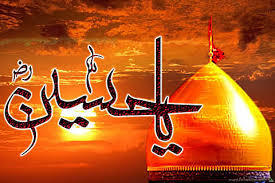
Hazrat Imam Hussein Ibn Ali, the grandson of the Prophet Muhammad (PBUH), stands as a monumental figure in Islamic history, known for his unwavering commitment to justice and his ultimate sacrifice in the Battle of Karbala. His legacy transcends religious boundaries, inspiring millions across the globe with his courage, piety, and devotion to truth.
Early Life and Lineage
Born on January 10, 626 AD in Medina, Imam Hussein was the second son of Hazrat Ali Ibn Abi Talib and Fatima Zara, the beloved daughter of Prophet Muhammad (PBUH). His lineage is one of nobility and virtue, with his parents being revered figures in Islam. From a young age, Hussein was known for his wisdom, kindness, and deep understanding of the Quran and Hadith. His upbringing in the Prophet's household imbued him with a profound sense of faith and duty.
The Political Landscape
The political landscape during Imam Hussein's time was marked by significant turmoil and corruption. Following the death of his brother, Imam Hassan, Hussein became the head of the Ahl Al-Bayt (the family of the Prophet) and a prominent leader among the Muslim community. The Omayyad dynasty, led by Yazid, sought to consolidate power through coercion and oppression, demanding allegiance from all. Imam Hussein's refusal to pledge allegiance to Yazid was a stance against tyranny and a declaration of his commitment to uphold Islamic principles.
The Journey to Karbala
Imam Hussein's journey to Karbala is a pivotal chapter in Islamic history. In 680 AD, he received numerous appeals from the people of Kufa, who sought his leadership to overthrow the oppressive Omayyad rule. Despite knowing the dangers that lay ahead, Hussein set out with his family and a small group of loyal companions. Their journey was not just a physical one but a spiritual and moral odyssey that would culminate in a momentous stand against injustice.
The Battle of Karbala
The Battle of Karbala took place on the 10th of Muharram, 680 AD. Imam Hussein and his 72 companions faced the vastly larger and heavily armed forces of Yazid. Despite being outnumbered and deprived of water for days, Hussein and his followers exhibited unparalleled bravery. The battle was not merely a military confrontation but a clash of ideals. Imam Hussein’s refusal to submit to Yazid's demands highlighted his unwavering faith and commitment to righteousness. His martyrdom, along with the massacre of his companions, became a powerful symbol of resistance against oppression.
Legacy and Lessons
The legacy of Imam Hussein transcends time and geography. His sacrifice at Karbala serves as a timeless reminder of the importance of standing up for justice, even in the face of overwhelming adversity. His story is commemorated annually during the Islamic month of Muharram, particularly on the day of Ashura. For Shia Muslims, Ashura is a day of mourning and reflection, but the values Hussein stood for resonate with all Muslims and indeed all people who champion human rights and dignity.
Conclusion
Hazrat Imam Hussein Ibn Ali's life and martyrdom offer profound lessons in courage, integrity, and steadfastness. His legacy is not just a historical narrative but a beacon of hope and inspiration. In a world where injustice and tyranny still exist, the story of Karbala serves as a reminder that the fight for truth and righteousness is eternal. Imam Hussein’s sacrifice teaches us that true victory lies not in the physical battle but in the moral and spiritual stand against oppression.
3 notes
·
View notes
Text
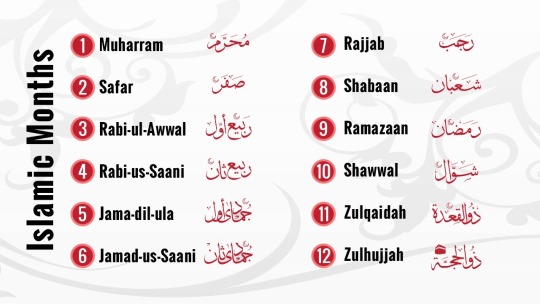
The Islamic calendar differs from the Gregorian calendar because it follows the cycle of the moon rather than the cycle of the sun, but the two calendars have one thing in common: they both have 12 months. The 12 Islamic months each have different meanings, with four of them being sacred months during which fighting and conflict is forbidden.
There is a rich history behind each of the months which is both symbolic and deeply interesting, so if you want to learn more about the meaning of Islamic months, keep reading.
Muharram
The first month in the Islamic calendar is Muharram and it translates from Arabic to ‘forbidden’. Its name relates to the fact that it is the first of the four sacred month during which fighting is haram. It is sacred so that Muslims can return from Hajj without being attacked. There are a number of notable events that took place during Muharram, with the most significant being the Day of Ashura which occurs on the 10th day.
Safar
The second month is called Safar. The translation means ‘void’, and there are two possible reasons for this. Some believe the name comes from the fact Arab homes were empty at this time of year because everyone was out finding and gathering food. In contrast, some people believe that the meaning of the month comes from tales of Arabs looting the homes of their enemies post-battle. Several battles were fought during Safar, and in an effort to cement Islam as a peaceful religion, Allah (SWT) commanded the Muslims move to Medina during Safar to avoid any further conflict.
Rabi al-Awwal
The third month in the Islamic calendar is called Rabi al-Awwal and it is an extremely joyous month. It translates to ‘the first spring’ or ‘to graze’, as this was when cattle began grazing as the earth sprouted with new life. The most prominent event during Rabi al-Awwal is the birth of Prophet Muhammad (PBUH) in 570 A.D. Many Muslims celebrate his birth, but they also grieve for him as it was also during Rabi al-Awwal that he passed away and returned to Allah (SWT) in 632 A.D.
Rabi al-Thani
Rabi al-Thani is the fourth Islamic month in the calendar and means ‘the second spring’. There are a number of different events that took place in this month, but for many Muslims, it is a time for mourning. Fatimah bint Musa, the daughter of the seventh Twelver Shia Imam, Musa al-Kadhim, and Sufi sheikh, Abdul-Qadir Gilani, both died during Rabi al-Thani.
Jumada al-Awwal
Jumada al-Awwal is the fifth month of the year and it translates to ‘the first parched land’. It’s thought that historically Jumada al-Awwal was the first month of summer pre-Islam, but some people believe it means ‘to freeze’ and relates to frozen weather causing parched land.
Jumada al-Thani
The sixth month of the Islamic calendar is Jumada al-Thani which means ‘the last parched land’. It is a significant month within the calendar, but different sects of Muslims celebrate it for different reasons. Fatimah al-Zahra, Prophet Muhammad (PBUH) and Khadijah’s youngest daughter, was born during this month, and she also died during this month. Caliph Abu Bakr passed away during Jumada al-Thani, making this a month of mourning for many.
Rajab
Rajab is the seventh month of the Islamic calendar and translates to ‘respect’ or ‘honour’. It is the second of the sacred months and therefore it is haram to fight or engage in conflict during this time. Rajab is considered Allah’s (SWT) month and is therefore a highly significant time during the year. It’s believed the Creator designated Rajab as a sacred month so that Muslims could complete the voluntary pilgrimage, Umrah, without being attacked.
Sha’ban
The eighth month of the Islamic year is called Sha’ban and is considered the month of Prophet Muhammad (PBUH). It is sometimes referred to as the neglected month because Rajab precedes it and Ramadan comes straight after it, but it is an important month nonetheless. Sha’ban means ‘scattered’ and relates to the time of the year when Arabs would historically scatter to find water. Nowadays, many Muslims use Sha’ban to prepare for Ramadan.
Ramadan
The ninth month of the Islamic calendar is one of the most prominent and is well known outside the Muslim community, too. Ramadan means ‘burning heat’ because it historically fell during a hot time of the year. Muslims observe Ramadan by fasting from dawn to dusk in order to cleanse their minds, bodies, and souls, and to be reminded of the fortune Allah (SWT) has bestowed upon them. Fasting gives Muslims an insight into what their lesser fortunate brothers and sisters go through when hungry.
Shawwal
After Ramadan comes the 10th month of Shawwal, which means ‘raised’. The meaning of the name relates to the fact that female camels are normally pregnant at this time of year. Shawwal is a celebratory month, with Eid al-Fitr taking place from the first to the third day. Lots of food, gifts, and prayers are exchanged during Shawwal, with many praying that their Ramadan is accepted by Allah (SWT).
Dhul al-Qadah
The 11th month of the Islamic calendar is Dhul al-Qadah which means ‘the month of truce’. It is the third sacred month during which Allah (SWT) forbids violence so that Muslims can make their way to Mecca to commence their Hajj safely. It is special because Allah (SWT) said so, and like the other sacred months, good and bad deeds are weighted more heavily at this time.
Dhul Hijjah
The final month of the Islamic year is the holiest and most significant of all. Dhul Hijjah means ‘pilgrimage’ and relates to the fact that Muslims carry out their religious due of Hajj during this month. There are many significant days during this month, including the Day of Arafah when Allah (SWT) finalised Islam. Other key dates include Qurbani, the Festival of Sacrifice that honours Prophet Ibrahim (AS) and his devotion to the Creator. Following Qurbani is Big Eid, also called Eid al-Adha – a time for great celebration and joy. Dhul Hijjah is the fourth and final sacred month so that Muslims can complete Hajj in safety.
#islam#quran#islamic#muslim#islamicquotes#pakistan#islamic group#muslim community#muslim countries#istanbul#Islamic months
13 notes
·
View notes
Text

The physical confrontation that was Karbala was not difficult for Imam Husayn (as). He was the son of the Lion of God who had led the Ummah of the Prophet (pbuh) to victory at every step. He watched, learned and participated in these battles. His natural ability, experience and supreme faith in God produced a valor and bravery that is unmatched in history.
Rather, his challenge from Allah was a psychological one. And any onlooker, historian, or believer must marvel at the emotional strength of this man. I remember my own father remarking before he passed that as he has gotten older and wiser, his amazement at who Imam Husayn (as) was had only increased.
The Imam (as) was tested with the most incredible trial, more than any other divinely guided Prophet (pbuh) or Imam (as) before or after him. His duty was to not only ready himself but his family, friends, and followers for the ultimate test of faith in the pursuit of justice -- to maintain the bonds of love and friendship while building courage in those who would stand with him and counseling those who would lose his presence, his warmth, and his guidance. And ultimately, he had to remain calm and level-headed to complete the divine mission of his grandfather while watching his loved ones perish before him.
There is no trial greater than the trial of Husayn (as), which resulted in a remarkable display of emotional resilience and fortitude, or what some may call 'courage', but even that word isn't enough to convey all that was encompassed in him. Because it ignores the 57 years of learning and patience that preceded the event.
There is so much patience preceding the story of Karbala - the patience of Husayn's mother Lady Fatima (as) after Rasulallah's (pbuh) passing, the patience of Husayn's father Imam Ali (as) during 25 years of illegitimate caliphate, the patience of his elder brother Imam Hasan (as) while his leadership was compromised, and Imam Husayn (as) was watching all this unfold during his life. If we could give a title to that entire period of history from point of view of the Ahlul Bayt (as), perhaps it would just be titled "Sabr".
This is the lead up to Karbala -- 50 years of patience unfolding in a divine act of immeasurable courage.
As I grow older, after having a child and losing my father, I finally understand what he meant. How incredible it is to be more moved and inspired by a person and an event as you grow older, because you realize the immense fear and excruciating pain of losing your loved ones and how you would do anything to avoid it. Instead, Imam Husayn (as) embraced that challenge from God against his own natural instincts to protect those most dear to him to confront tyranny, defeat injustice and once and for all show humanity that an uncompromising soul lives free forever.
#Muharram #Ashura #Karbala #ImamHusayn
6 notes
·
View notes
Text
This Muharram, download the first book in English on #arbaeen
Its packed with information, including:
The Merits of Ziyarah
The Etiquettes of Ziyarah
Significance of number 40
Evidence for the Arbaeen Ziyarah
Benefits of the Walk
The Philosophy and History of the walk
The etiquettes of the walk
Useful tips for those walking
Commentary of Arbaeen Ziyarah
Personal experiences of those who walked and more..
alhilli.org/arbaeen-the-wa…
2 notes
·
View notes
Text

بسم الله الرحمن الرحيم
Bismillah-ir-Rahman-ir-Rahim
Tahfeem about Muharram
Muharram is the month that marks the beginning of the Hijrah calendar. It is one of the four sanctified months about which the Holy Qur’an says, “The number of the months according to Allah is 12 (mentioned) in the Book of Allah on the day in which He created heavens and the earth. Among these (12 months) there are four sanctified.”
Ayah at-Taubah (Repentance) 9:36.
The specific mention of these four months does not mean that any other month has no sanctity, because the month of Ramadan is admittedly the most sanctified month in the year. But these four months were specifically termed as sanctified months for the simple reason that their sanctity was accepted even by the pagans of Makkah. It’s sanctity is upheld by the Qur’aan as the sanctified month. Allah the Mighty chose Muharram for His special blessings.
The Holy Prophet ﷺ has said: “The most excellent fast after Ramadan is Allah's month, Muharram” ~
https://hadeethenc.com/en/browse/hadith/11261
The Prophet (ﷺ) said, "There is a gate in Paradise called Ar-Raiyan, and those who observe fasts will enter through it on the Day of Resurrection and none except them will enter through it ~ : Sahih al-Bukhari 1896
He encouraged us to take up a fast during Muharram, on the 9th and 10th (or 10thand 11th) days of the month. This would be Ashura. At the end of Gregorian calendar July.
Below are some misconceptions with regard to Ashurah. Learning Islam Together couldn’t find any support of authentic Islamic sources.
• This is the day in which Adam was created.
• This is the day in which Ibrahim was born.
• This is the day on which the Qiyamah (dooms-day) will take place.
• Whoever takes bath in the day of Ashurah will never get ill.
All these are totally baseless and the traditions referred to in this respect are not authentic.
Some people take it as Sunnah to prepare a particular type of meal on the day of Ashurah. This practice, too, has no basis in Islamic.
Some other people attribute the sanctity of Ashurah to the martyrdom of Sayyidina Husain (رَحْمَةُ الله عليه). No doubt, the martyrdom of Sayyidina Husain is one of the most tragic episodes of our history. Yet, the sanctity of Ashurah cannot be ascribed to this event for the simple reason that the sanctity of Ashurah was established during the days of the Prophet ﷺ even before the birth of Husain.
Another misconception about Muharram is that it is an unlucky month because Husain (رَحْمَةُ الله عليه) was martyred in this month. It is for this misconception that people avoid holding marriage ceremonies in Muharram. This is again a baseless concept which is contrary to the teachings of the Holy Qur’an and the Sunnah.
Another wrong practice related to this month is to hold the lamentation and mourning ceremonies in the memory of martyrdom of Sayyidna Husain.
#learningislamtogether#muslim#hadith#islam#quran#hijab#muslimah#qur’an#allahisone#mashallah#dawah#rasulullah
2 notes
·
View notes
Text
#1184 Why does the year start on January 1st?


Why does the year start on January 1st? The year starts on January 1st because of the Romans and then Pope Gregory XIII. Although, for most of the history of civilization, the year did not start on January 1st,, and for a lot of cultures, it still doesn’t. In fact, for the 1.4 Chinese people and 1.9 billion Muslims in the world, the new year doesn’t start on January 1st. In the very early days of humans living together in groups, there was no technical concept of a year and there were no calendars. That being said, everybody knew that the seasons changed, so there might have been an idea that one cycle of seasons had passed, and another one was starting. As to which season they saw as the last one and the first one, I have no idea. Once groups became a little more sophisticated, they started counting the years by how many times the moon comes and goes, giving birth to the lunar calendar. Calendars evolved through the Bronze Age and the first idea of celebrating a new year started in Mesopotamia in about 2000 BC. The festival was held in the spring and celebrated the birth of the new year. And spring does make sense because that is when life starts after the long cold winter. In 1500 BC, China started celebrating their new year on the second new moon following the winter solstice. That is usually in later January or early February, and they still celebrate it at the same time today. The Egyptians celebrated the new year in the summer, in the middle of July, when the star Sirius appeared in the sky. Sirius is a very bright sky and can be seen on the horizon in the summer. In the Islamic calendar, the new year was taken to be the first crescent moon in the holy month of Muharram, and was the day that the Prophet Muhammad led his followers from Mecca to Medina. This falls in the months of June or July and Muslims still celebrate the new year here. So, why do we in the West celebrate it on January 1st. It started with the Romans. In the beginning of Rome, the new year was celebrated on March 1st. This is why September, October, November, and December mean 7th month, 8th month, 9th month, and 10th month, even though they are the 9th to 12th months for us. If the year starts in March, then September is the 7th month and that makes sense. However, they only had 10 months, which left them with a big chunk of days spare over the winter. In the 7th century BC, Rome’s second king, Numa Pompilius, divided the year into 12 months and invented January and February. They were in the place they are now, the winter, but they were at the end of the year because it started in March. Then, possibly in the 4th or 5th centuries BC, January and February were moved from being at the end of the year to being at the start. Nobody knows why, but it could have happened when the foundational laws of Rome, the 12 tables, were being written. However, the legal year still started in March until 53 BC when the start of the year was officially moved to January 1st. The reason for this was probably because of a war in Spain. New consuls, the people who governed Rome, were sworn in on the 1st of March for their one year of service, but because of the war, they had to spend a few months getting to Spain for the war, so they were sworn in earlier. And thus the start of the year became January 1st. From here on, we have basic calendar history. Julius Ceasar realized the calendar didn’t fit the amount of days, so he had his astronomers fix it, which became the Julian calendar. It was a good try, but it also went gradually out of sync with the seasons, so it had to be fixed again in 1570 when Pope Gregory XIII had the Gregorian calendar created. His biggest worry was that religious festivals were getting too far out of line. His calendar cut out a few days and got everything back on track. Both Ceasar and Pope Gregory used January 1st for the start of the year. The Gregorian calendar spread around the world, but England refused to use it. This was down to them disliking the pope and not wanting to be ordered around by Rome. England had split with the Roman Catholic church a few years before this calendar came out and feelings were still raw. Then, as time went on, they just became stubborn. They refused to use the calendar, and they refused to have January 1st as the start of the year. In Great Britain and her colonies, the year started on March 25th. March 25th had been common across Europe to celebrate the Christian festival of the Annunciation, but most other countries had slowly adopted the Gregorian calendar. Britain only decided to adopt the Gregorian calendar in 1752. Their calendar had gone so out of sync with the rest of the world that they had to lose 11 days from September of that year. Many documents written before 1752 in Great Britain have two dates on them to signify what they mean. If they are writing about January, February, or March (before the 25th), they would say February 10th 1658/59. This signifies that it is still 1658 on the British calendar but 1659 for the rest of the world. Once they gave up, things became easier. And that is what I learned today. Try these: - #545 When did April Fools' Day start? - #448 Why is Christmas on December 25th? - #536 How is Easter calculated? - #247 When was the expression "mayday" first used? - #423 Why are there twelve months in a year? Sources https://www.reddit.com/r/AskHistorians/comments/1f6sl1a/why_does_january_1st_start_the_new_year_and_not/ https://blog.nationalarchives.gov.uk/260-years-of-double-dating/ https://time.com/6550127/new-year-celebration-january-calendar-date-history https://en.wikipedia.org/wiki/New_Years_Day https://skyandtelescope.org/astronomy-news/meet-sirius-brightest-star https://www.cultureally.com/blog/islamic-new-year https://en.wikipedia.org/wiki/History_of_calendars Photo by Jonathan Petersson: https://www.pexels.com/photo/fireworks-display-wallpaper-399610/ Read the full article
0 notes
Text
The Benefits and Virtues of Rajab, the Month of Allah (Subhanahu wa Ta’ala)
Verily, the number of months with Allah is twelve months (in a year), so was it ordained by Allah on the Day when He created the heavens and the earth; of them four are Sacred, (i.e. the 1st, the 7th, the 11th and the 12th months of the Islamic calendar). That is the right religion, so wrong not yourselves therein, and fight against the Mushrikun (polytheists, pagans, idolaters, disbelievers in the Oneness of Allah) collectively, as they fight against you collectively. But know that Allah is with those who are Al-Muttaqun (the pious - see V.2:2). Noble Qur’an, Surah 9, Ayah 36.
The above ayah references four sacred months, with Allah (Subhanahu wa Ta’ala) specifically commanding us not to wrong ourselves during them. (We’ll get to this command later!) The Prophet (SallAllahu ‘alaihi wa Sallam) clarified what these months were in the following hadith:
′Time has come back to its original state which it had when Allah created the Heavens and the Earth; the year is twelve months, four of which are sacred. Three of them are in succession: Dhul-Qa‘dah, Dhul-Hijjah, Al-Muharram and Rajab of Mudar [a title of Rajab], which stands between Jumada (ath-Thani) and Sha‘ban’. [Bukhari]
This year, the sacred month of Rajab will most likely begin on Tuesday 31st December 2024, at Maghrib time (the first day will be Wednesday 1st January 2025). Allah (Subhanahu wa Ta’ala) has chosen Rajab above other months to be sacred, so of course, we must pay special attention to this period and ensure we are acquainted with its virtues!
The history of the sacred months
Since the beginning of time, fighting has been forbidden during the sacred months. The sequence of the sacred months protected pilgrims to the Ka’bah both before the advent of Islam and during its early days. They were divinely designed to allow pilgrims safe passage to and from Makkah during the Hajj season.
Meanwhile Rajab, the seventh month of the lunar year, stands apart from the other sacred months. It is thus called ‘Rajab al-Fard’ or ‘Rajab the Separate One’. Allah (Subhanahu waTa’ala) made it sacred in order to preserve people’s safety during ’Umrah, the minor pilgrimage. Unfortunately, many of the Arabs in pre-Islamic times didn’t respect the sanctity of Rajab, and they often switched it to elsewhere in the year so they could fight in the seventh month! They would pretend that Rajab was in a different month to suit their own political agendas.
The exception was the tribe of Mudar, who consistently observed the order of the lunar months and the sanctity of Rajab. Thus, when the Prophet (saw) was confirming the sacred months for us, he named it ‘Rajab of Mudar’, so the Companions knew he (saw) meant the seventh month of the lunar year.
The purpose of the sacred months
As mentioned above, the sacred months allowed pilgrims to travel safely to and from the holy lands. This particular purpose is less relevant today, when we don’t need a whole month to travel to Makkah!
Everything we do and say this Rajab, and extra-keen in seeking Allah’s pleasure:
The first virtue of Rajab
Rajab has three main virtues which we will cover in this article. The first of them is that it is the month of Allah (Subhanahu wa Ta’ala).
The Prophet (saw) said, ‘Rajab is the month of Allah (Subhanahu wa Ta’ala), Sha‘ban is my month and Ramadan is the month of my Ummah’. [Suyuti]
Subhan’Allah, this is a great title to be honored with, and no doubt we should be paying special attention to the month that bears this honour.
The second virtue of Rajab
Rajab was divinely selected for three historic and momentous events:
The marriage of the noble parents of the Prophet (saw)
Aminah (RadiyA;;aha ‘anhaa), the noble mother of the Prophet (saw) becoming pregnant with the Best of Creation (saw)
The miraculous Night Journey & Ascension (Al-Isra’ wal-Mi’raj), which took place on the 27th night of Rajab, according to the dominant opinion. You can read more about this journey in our previous article.
SubhanAllah, while most Muslims - rightfully! - give importance to Ramadan as the month in which the Holy Qur’an was revealed, we must not neglect Rajab’s status. Not only was the Prophet (saw) conceived in Rajab, we also received three further divine gifts during Al-Isra’ wal-Mi’raj:
The gift of our five daily prayers, which ground our days in the worship of Allah (Subhanahu waTa’ala)
The last two ayat of Surah al-Baqarah, of which the Prophet (saw) said, ‘Whoever recites the last two verses of Surah al-Baqarah in the night, it will suffice him’. [Bukhari] Allah’s gift to the believers: Whoever dies believing in Allah (Subhanahu waTa’ala) and not associating anything with Him, will enter Paradise. [Nasa’i]
It is clear, therefore, that Allah (Subhanahu waTa’ala) chose Rajab above other months for extraordinary events.
The third virtue of Rajab
Did you know that Rajab is also known as ‘Rajab al-Asabb’ or ‘the Pouring Rajab’? This is because Allah (Subhanahu waTa’ala) pours His numerous blessings and favours down during this month, as well as His abundant mercy.
Similarly, Rajab is also known as the Month of Tawbah (repentance) and the Month of Istighfar (seeking forgiveness).
Again, most Muslims - rightfully! - increase their good deeds and worship during Ramadan, hoping to receive the blessings and mercy which are pouring down. But we also have a chance to do this during Rajab, and we definitely shouldn’t miss out! Remember, our deeds weigh heavier on the scales in the sacred months, so this is an excellent opportunity to invest in our akhirah.
The meaning of ‘Rajab’ and its titles
Before we go into the recommended actions for Rajab, we’d like to touch on a few of its names.
This amplifies the meaning of the sacred month, in which war and fighting were unlawful since the beginning of creation. This rule was even respected by some of the pre-Islamic Arabs in the Time of Ignorance (Jahiliyyah).
To further emphasize its sanctity, Rajab is also called ’Rajab al-Murajjab’, which means that it is extraordinarily honored, revered and magnified.
Moreover, it is called ‘Rajab al-Asamm’, which means ‘the Deafening and Silent Rajab’. This is because you cannot hear the clashing of swords during Rajab, as fighting is prohibited.
Earlier, we mentioned that it is called ‘Rajab the Separate One’, because it stands alone as a sacred month.
Finally, there is one more linguistic wonder we’d like to mention. Some scholars have mentioned that ‘Rajab’ is composed of three letters, which represent other profound words:
Ra - for Rahmah: representing the Rahmatu-Allah, the mercy of Allah (Subhanahu wa Ta’ala)
Jeem - for Juud: representing Juudu-Allah, the generosity of Allah (Subhanahu wa Ta’ala)
Ba - for Birr: representing Birru-Allah, the kindness of Allah (Subhanahu wa Ta’ala)
As you can see, even the meaning of ‘Rajab’ reflects its virtues in so many ways.
It is highly recommended to turn to Allah on the first night of Rajab. Though we don’t have an authentic hadith of the Prophet (saw) regarding this, many scholars have mentioned the virtues of this night.
Ibn Umar (ra) said, ’There are five nights in which a du’a is not rejected: Thursday night, the first night of Rajab, the night of mid-Sha’ban (15th night), the night of Eid al-Fitr and the night of Eid al-Adha’. [Shu’b al-Iman]
Imam Shafi’i also mentioned these five nights in his Kitab al-Umm.
Moreover, it has been narrated that Ali ibn Abi Talib (ra) used to spend four nights in worship: the first night of Rajab, the nights before the two Eids, and the 15th night of Sha’ban.
In light of the above quotes, we should make sure to make du’a to Allah on the first night of Rajab! This year, Rajab begins on the night of Tuesday 31st December 2024. We will announce it at Maghrib on Twitter, Facebook and Instagram, so keep an eye out!
Make sure to make a list of du’as which you really want Allah to answer, so you are fully-prepared when the night begins! Recommended: Seek forgiveness throughout the month It has been narrated, ‘Seek much forgiveness from Allah in Rajab because in every hour (of the month) Allah frees people from the Fire’. [Dailami] For this reason, the scholars say that Rajab is the month of seeking forgiveness, Sha‘ban is the month of bestowing prayers upon the Prophet (saw), and Ramadan is the month of the Qur’an. We recommend saying this short and powerful du’a every day in Rajab:
Another way of seeking Allah’s forgiveness is by giving charity, as the Prophet (saw) said, ‘Charity extinguishes sins just as water extinguishes fire’. [Ibn Majah]
There are now only two months to go until Ramadan! It is essential that we start preparing from now, laying the foundations of good habits and making a plan of action for this blessed month.
As Imam Abu Bakr al-Warraq al-Balkhi (rh), the uncle of Imam Tirmidhi (rh), said, ‘The month of Rajab is the month of planting (your seeds), Sha‘ban is the month of irrigating / watering (them), and Ramadan is the month of harvesting the crop’.
He (rh) also said, ‘The month of Rajab is like wind, Sha‘ban is like clouds and Ramadan is like rain’. So how can we use Rajab to prepare for Ramadan? Here’s our simple, three-step plan:
One: To start with, you have to make a good intention. The Prophet’s (saw) du’a is perfect for this:
Two: Write down everything you regret NOT doing last Ramadan. Did you find it difficult to pray at night? Did you put off making up fasts until two weeks before Ramadan? Did you forget to make certain du’as?
Three: Make a plan for addressing these issues during Rajab. For example, you could start praying at night once a week. You could start fasting on Mondays or Thursdays (or both!) from now. You could make a list of du’as that you must make, so you can check them off every day in Ramadan.
Above all, remember that a sacred month is similar to a sacred place. We know that it is recommended to bathe and purify oneself before entering the haram of Makkah, and become more conscious of the weight of our actions. Likewise, we should try to enter a sacred month in a state of purity, and strive to maintain that purity throughout the month.
For example, the Messenger of Allah (saw) recommended fasting at least some days in each of the sacred months. Some of the Companions, among them Umar (ra) and his son Abdullah (ra), and Aisha (ra), liked to make ’Umrah in Rajab.
SUMMARY
Here is a brief summary of the virtues and recommended actions for Rajab:
It is the ‘month of Allah (Subhanahu wa Ta’ala)’ and a sacred month, divinely selected for momentous events such as Al-Isra’ wal-Mi’raj. It is also a month in which Allah’s blessings and mercy pour down on us. It is recommended that we seek forgiveness throughout Rajab, but especially during the first night, as it has been narrated that our du’as are answered on this night. It is also Sunnah to use this month to prepare for Ramadan, which is only two months away
We are working on a number of renovation projects in Al-Aqsa, carrying the incredible reward of facilitating every prayer (worth 1,000 prayers) and act of worship there. And what better time to honour this symbol of Allah (Subhanahu wa Ta’ala) than during Rajab, the sacred month of Allah (Subhanahu wa Ta’ala) during which His blessings pour down upon us
We pray Allah (Subhanahu wa Ta’ala) showers you with blessings in Rajab and beyond, that you gain the reward of 1,000 prayers, and that you reap the reward of this Sadaqah Jariyah for years to come, ameen!
0 notes
Text
Understanding Voluntary Fasting Days in Islam
Fasting is a deeply rooted practice in Islam, often associated with the month of Ramadan. However, there are numerous voluntary fasting days in Islam that offer additional spiritual benefits and opportunities for reflection. These days provide believers with the chance to engage in acts of devotion outside of the obligatory fasting during Ramadan.
The Concept of Fasting in Islam
Fasting, or Sawm, holds great significance in Islam. It is one of the Five Pillars, emphasizing self-discipline, spiritual growth, and empathy for those who are less fortunate. While the fast during Ramadan is mandatory, Muslims are encouraged to observe voluntary fasting on certain days throughout the year to enhance their connection to God.
Key Voluntary Fasting Days
The Six Days of Shawwal: Following Ramadan, the month of Shawwal begins. It is highly recommended to fast six days during this month, ideally in succession but not required. Observing these fasts is believed to be equivalent to fasting the entire year.
The Day of Arafah: This day falls on the 9th of Dhul-Hijjah, the day before Eid al-Adha. It is a significant day for those performing Hajj, but for those not on pilgrimage, fasting on this day is highly encouraged. It is a day of reflection, prayer, and seeking forgiveness.
The Day of Ashura: The 10th of Muharram is known as Ashura. It commemorates significant events in Islamic history, including the day when Moses and the Israelites were saved from Pharaoh. Fasting on this day is considered a Sunnah, and many Muslims also fast on the 9th of Muharram to mark the occasion more meaningfully.
Mondays and Thursdays: Many hadiths suggest that the Prophet Muhammad (peace be upon him) frequently fasted on Mondays and Thursdays. These days are seen as opportunities to gain extra rewards and purify oneself.
The White Days (Ayyam al-Bid): The 13th, 14th, and 15th of each lunar month are known as the "White Days" because of the full moon. Fasting on these days is encouraged as a means of attaining additional blessings.
Spiritual and Physical Benefits
Voluntary fasting days in Islam serve several purposes. Spiritually, fasting allows for greater self-discipline and mindfulness. It encourages believers to focus on their faith and engage in prayer and reflection. Many find that fasting brings clarity to their thoughts and strengthens their relationship with God.
Physically, fasting has been shown to have health benefits, such as improved digestion and detoxification. Observing these voluntary fasts can be a way to maintain a healthy lifestyle while also fulfilling a spiritual practice.
Learning and Growth
To deepen your understanding of Islam and its teachings, consider exploring resources that focus on Quranic knowledge and Arabic language learning. Websites like Shaykhi provide valuable insights and educational materials to help enhance your journey in faith.
Conclusion
In conclusion, voluntary fasting days in Islam offer a unique opportunity for believers to strengthen their spirituality and engage in acts of worship outside of Ramadan. By observing these days, Muslims can gain greater awareness of their faith and enjoy both spiritual and physical benefits. Whether it's the six days of Shawwal, the Day of Arafah, or Ashura, each occasion serves as a reminder of the importance of self-discipline and connection with God.
0 notes
Text
Bayt Al-Suhaymi :The Rich History and Cultural Significance
Bayt Al-Suhaymi :The Rich History and Cultural Significance
Bayt Al-Suhaymi is a living piece of wonder and happiness displayed as the finest Islamic architecture from the Ottoman era dating back some 370 years.
It is one of the most stunning and vibrant medieval Islamic buildings in Cairo, the finest non-monumental architecture found in the golden capital of Cairo that functions as a magical museum in the form of a traditional Islamic themed house displaying a rare form of impeccable skill and hypnotic charm. The artistic taste of this golden period. Everyone will witness the minds, artistic innovation and imagination of these amazing craftsmen.
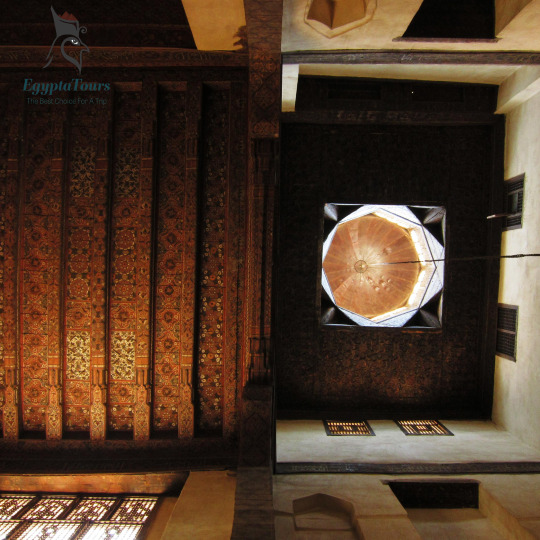
This heavenly Islamic wonder is located in the Al-Darb Al-Asfar neighborhood in Al-Gamaliyya, branching off golden Al-Muizz Street, which is one of the most prestigious streets in the wonderful old capital of Cairo, filled with many palaces, mosques, buildings and shrines.
The first part of the Bayt Al-Suhaymi tribal area was built in 1648 AD by Sheikh Bandar AL Trajan Abdel Wahab Al Tablawi and the second in 1797 AD by Sheikh Bandar al-Trajan Ismail bin Ismail Shalabi, who also combined the two houses into one house. Big house. The house was owned by the sheikh of Turks’ Rawaq in Al-Azhar Al-Sharif, the scholar Muhammad Amin Al-Suhaimi, who was born and raised in Mecca, the Kingdom of Saudi Arabia, before settling in this house. His family remained for many generations in this wonderful home.
He is known for holding a Ramadan night, establishing a religious advisory area, and building a shelter for foreign travelers. He died in 1928 AD, and his house was transformed in 1931 AD when Al-Suhami sold this house for 6,000 pounds to the Committee for the Preservation of Arab Antiquities. The house was completely renovated in 1994 and is once again ready to receive visitors.
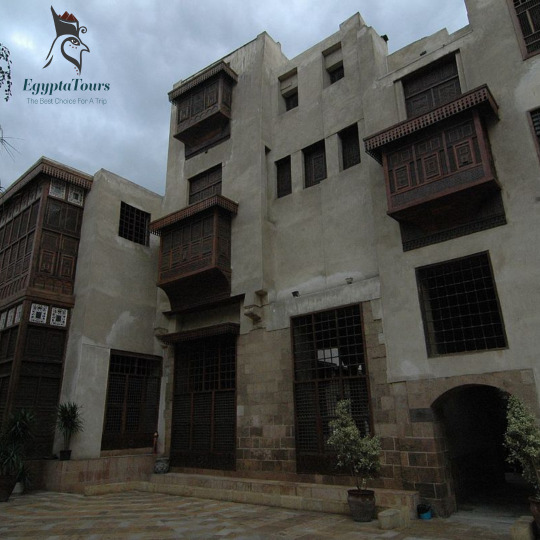
A number of excavations have proven that the house was built on the ruins of the Fatimid era. It has become a very charming artistic and cultural center that shows the Egyptian identity within the Egyptian Islamic heritage through a number of festivals that are held during the month of Ramadan by holding Shadow Fantasy, Al-Aragoz, and Tanoura shows.

Bayt Al-Suhaymi consists of a number of buildings overlooking a huge, picturesque courtyard, where the facades are filled with charming wooden grilled windows. It contains a large balcony for sitting and a furnished reception hall. It is located on an area of 2000 square meters and consists of two connected houses.
The house contains a number of rooms, including a birth chair, a bathroom, and some water wells. There is a waterwheel for irrigating the garden, an ox mill, and some pottery and stone vessels for preserving grain. It has a magical roof that spreads like a magnificent constellation. It contains a number of halls and rooms on each floor. At the heart of the house there is a wonderful fountain that acts as an air cooler.
The house was designed in the Islamic style, as it is divided into “Salamlek” on the first floor, which is designated for all male guests, the second floor, “Haramlek,” which is for the Sultan’s harem, and finally, Al-Muharram, designated for the Sultan’s harem. It attracts curious visitors and has some wonderful designs and decorations on the two floors. There are a number of beautiful Mashrabiya windows overlooking the garden, in addition to a beautiful marble floor, decorated ceiling, and wooden furniture.
When you go up from the first floor, you will notice that there are many rooms for the family, and you will find that these rooms are similar to the rooms on the ground floor, but these rooms differ because they have many windows, and these windows overlook the street. On your short Egypt tour packages, you will be surprised by the beauty of the first floor rooms covered in blue porcelain and beautiful floral decorations.
There are also dining utensils made of porcelain and decorated ceramic, and on the first floor there is a small room used to store crops. On this floor there is a wonderful bathroom covered in white marble and a wonderful dome-shaped ceiling. This bathroom has a stove to heat water, a sink carved from a single piece of marble, and a water tank.
There are also two parts in this house that you can explore during Egypt day tours, one in the front is a garden with a wooden couch and many trees, while in the back there is a water basin and a mill.
0 notes